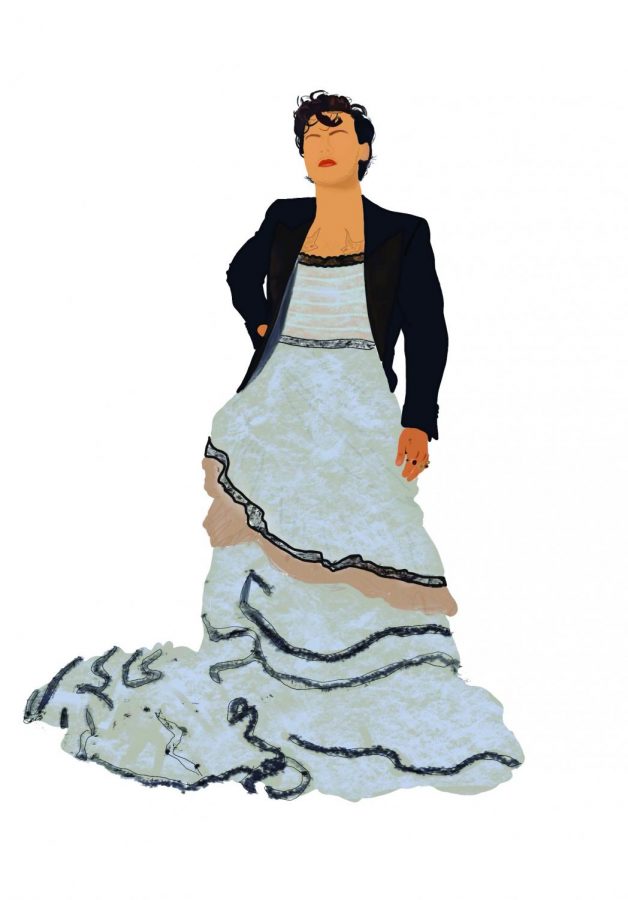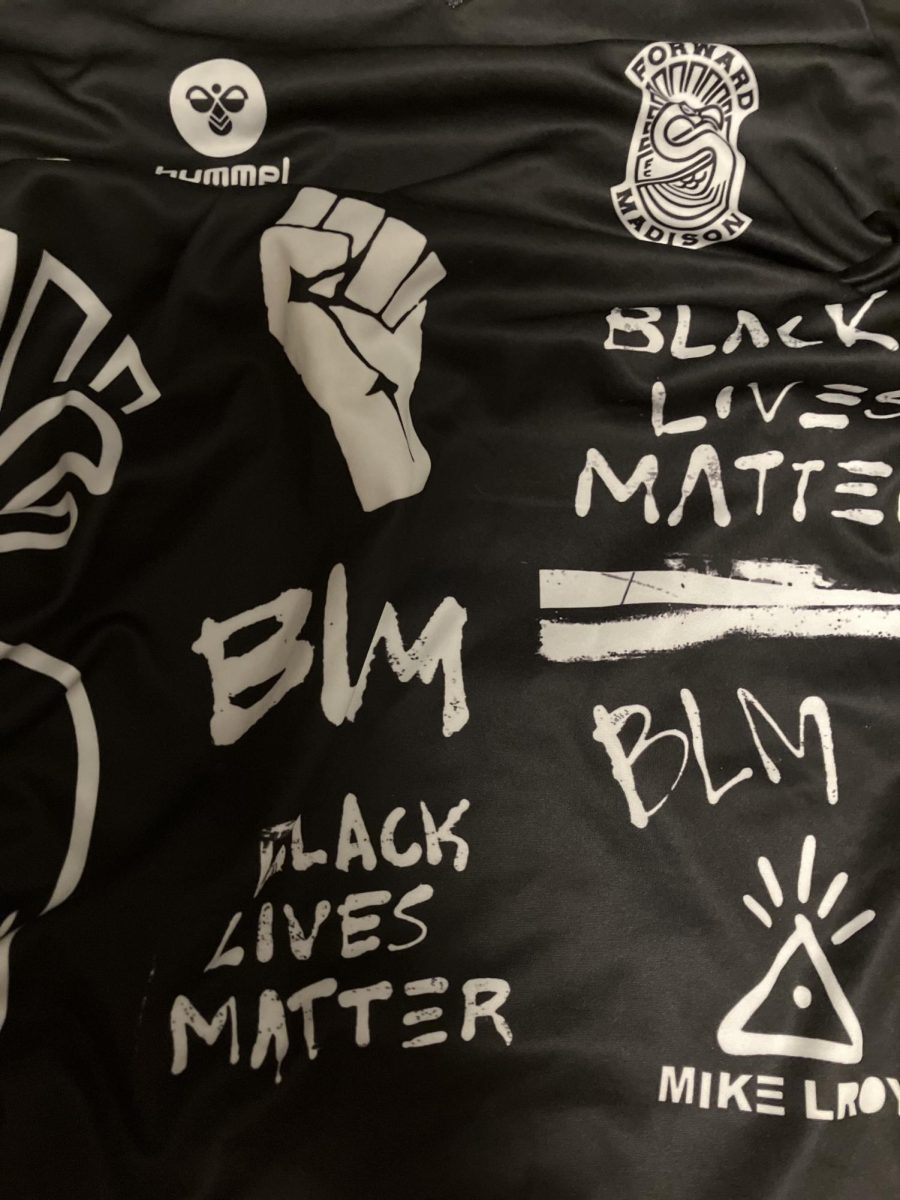The Dec. 2020 cover of Vogue Magazine features Harry Styles in a mesh, baby blue dress with black lace trim, covered by a black sheen blazer. Intricate but chunky gold rings adorn each of his hands. In 2012, Harry would have most likely been seen in skinny jeans with a plain t-shirt, flannel, and a dark jacket. Over the last 10 years in the spotlight, his image evolved and matured from the teenage boy band member to gender-barrier breaking fashion icon.
During his time in One Direction, fans constantly questioned his sexuality. Rumors about a secret relationship between him and bandmate Louis Tomlinson, “Larry Stylinson,” became trending hashtags on Twitter every other day. The speculation about his identity is nothing new to old fans.
When he started painting his nails, and one hand was pink, and the other was blue, this was taken as a hint to bisexuality. However, he’s expressed a desire to have the freedom to be whoever he wants without forcing labels on his identity to suit everyone else’s curiosity. The way someone dresses does not have to correlate with sexuality, rather, it has everything to do with art, expression, and personal preferences.
While women should not dress to please men, and men should not dress to please women, if you ask women what they think of Styles, I guarantee they will express overwhelming support. Yet, toxic masculinity suggests that femininity is inherently bad because it is avoided and denounced at all costs. Furthermore, it also refers to the notion that some people’s idea of “manliness” perpetuates aggression, homophobia, and domination. In the end, it is just more attractive when someone appreciates femininity while being uniquely themselves and expressing their style creatively.
Typically the ones voicing distaste online are men (or self described “conservative influencer” Abby Shapiro). This makes no sense to me because Styles is doing the heavy lifting of breaking barriers, so they do not have to feel forced to be excessively masculine.
The earliest memory I have of similar online outrage over a man’s fashion choices is when Jaden Smith started wearing skirts in 2016. He was featured in a Louis Vuitton campaign in a midi-skirt that same year. Even earlier, Prince’s entire career was spent breaking gender norms. So, Styles didn’t singlehandedly break down gender barriers in fashion, however, we are lucky to have someone with his broad platform and following, encouraging the freedom of self-expression and portraying it in a positive light.







